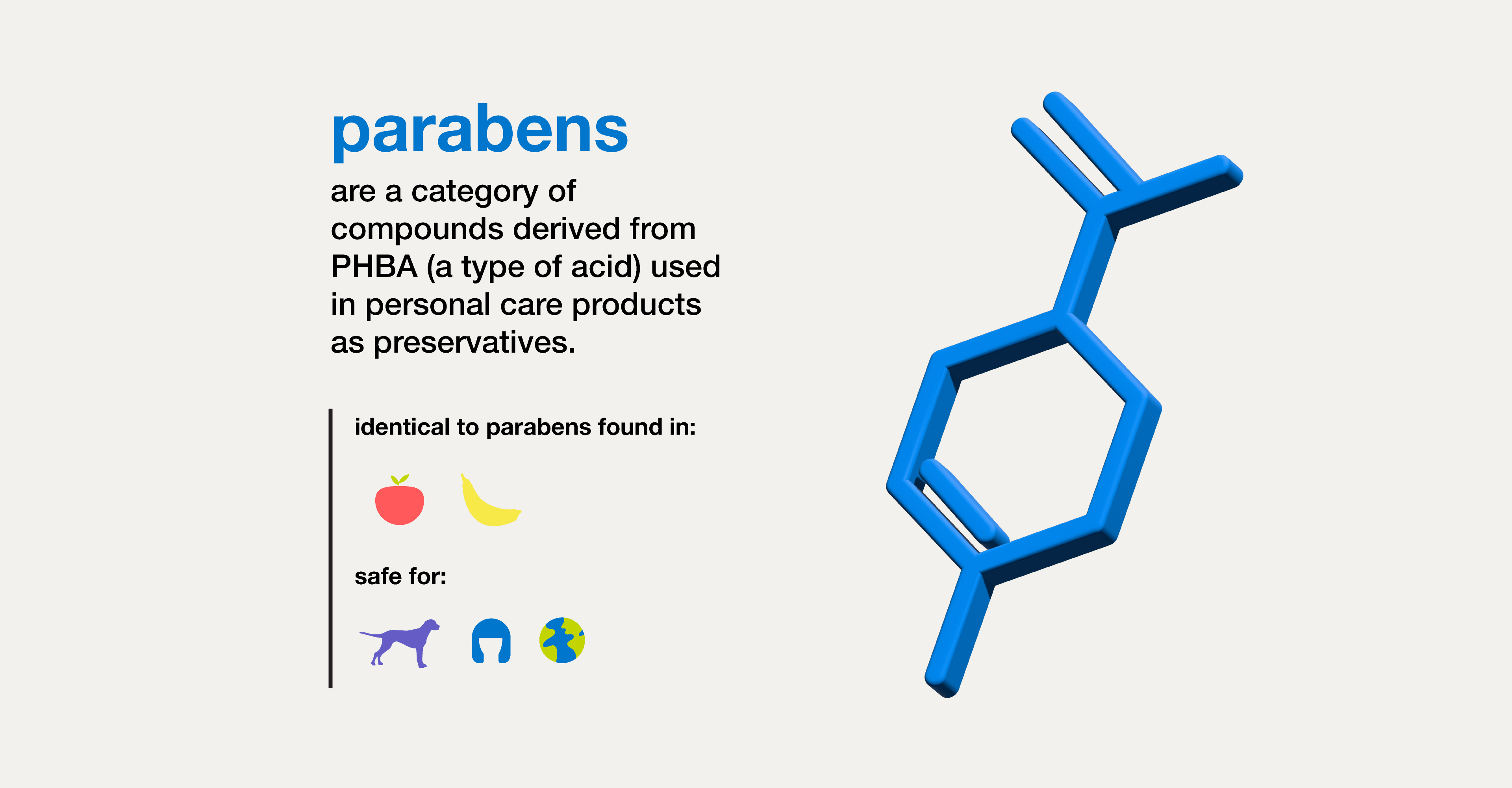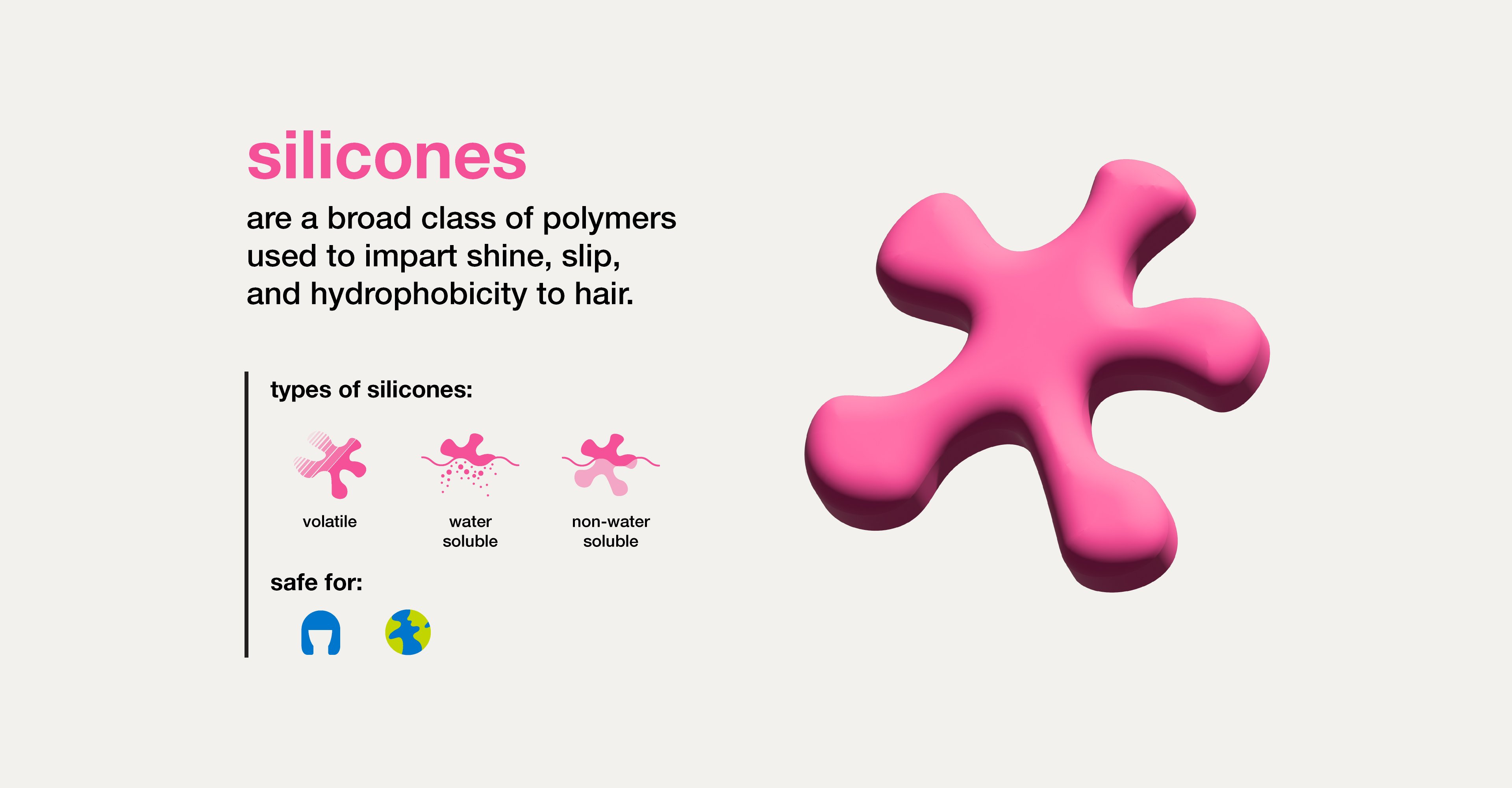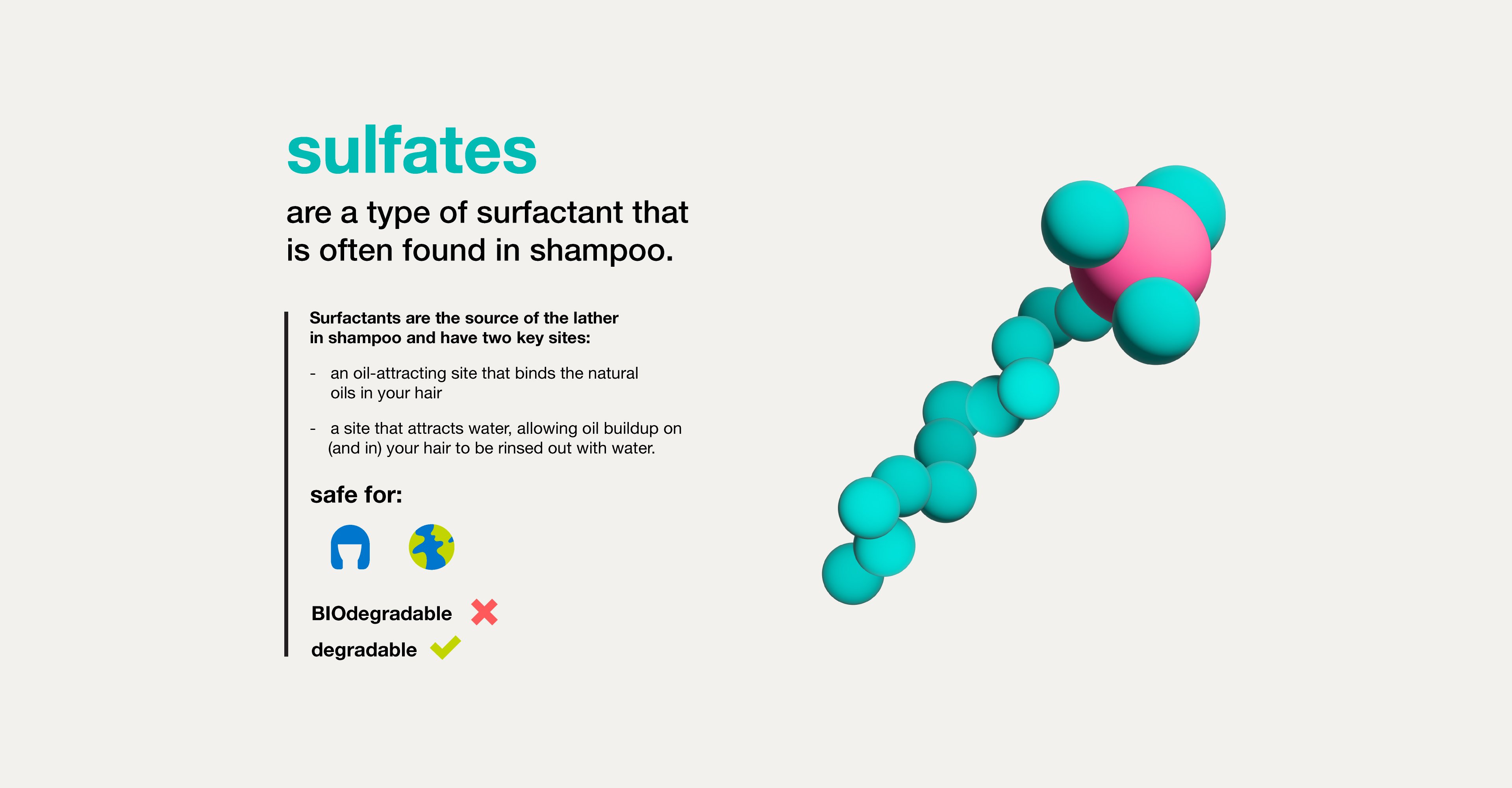Today we’re talking ingredients. The good, the bad, and the unexpected-actually-ok-for-you ones. The great thing about the world today is that consumers are more conscious now than ever about what’s going in, on, and around their bodies—the problem though, is that a lot of brands have used this hyper-awareness to drive fear around certain ingredients to market their products.
You know by now we love research and speak in facts first, so we wanted to take you on a deep dive into the ingredients that get a bad rap; think parabens, silicones, and sulfates.
Turns out, when used correctly or used in place of harmful or non-regulated organic ingredients, they may actually be better for you.
Let’s break it down.
parabens
Parabens have developed a bit of a reputation. People commonly associate parabens with being health troublemakers, being worse for you than natural preservatives, and wreaking havoc on the environment.
For a quick overview: parabens are a category of compounds derived from PHBA (a type of acid) used in personal care products as preservatives. They are identical to naturally-occurring parabens found in numerous fruits and vegetables, and they prevent the accumulation of harmful mold, yeast, and a broad spectrum of bacteria from forming in your products.

myth: parabens are bad for your health
Despite the rumor mill, FDA scientists maintain that there is no clear evidence to suggest that the parabens used in cosmetics have an adverse effect on human health—phew.
This myth originated from a study found in 2004 that reported the presence of parabens detected in low levels in cancerous breast tissue. But here’s the catch: it was NOT found that they cause breast cancer.
Think about it this way: if you’re not feeling well, maybe you make yourself a bowl of chicken soup. If someone decided to study how often people eat chicken soup, they might find a positive relationship between chicken soup and people feeling sick, i.e. that the two often occur together. But it is not correct to conclude that chicken soup CAUSES one to be sick! Likewise, the presence alone of a compound does not indicate that it causes a harmful effect. In the science world, this is known as correlation vs. causality.
Numerous health and regulatory bodies, including the FDA, CDC, and CIR (and even the researcher who published the 2004 paper!) have stated that, based on the current body of research, there is no conclusive evidence that these parabens have carcinogenic activity or any other adverse effects on human health.
myth: natural preservatives are better
Maybe you’re more into the organic way of life. And we hear you, but in some cases, especially when it comes to products going on and around your body, natural or organic isn’t always better. The newer, more natural replacements of parabens generally preserve products for a much shorter time and unfortunately work against a smaller range of bacteria. Even more, the natural preservatives found in paraben-free products may actually be more harmful than their paraben counterparts as, in comparison, they are far less researched, do not follow the same strict regulations, and can even be more allergenic. Yikes.
myth: parabens are harmful to you and the planet
But what about the environment, you ask?! Aren’t parabens bad for our planet? Parabens are ultimately biodegradable and widely considered non-toxic to animals, especially in the concentration used in cosmetics, food, and pharmaceuticals (remember—they are a highly effective class of preservatives and so are typically used at levels less than 0.1%).
They have been detected at varying levels in some wastewater, but during the wastewater treatment process are effectively eliminated and harmful effects have not been demonstrated.
Fun fact: Studies on parabens and their by-products are ongoing, making them some of the most widely-studied ingredients in cosmetics!
silicones
This is a big one in the hair world. So many haircare products are advertised as silicone-free, so much so that most consumers believe silicones will always have a negative impact on our hair and the environment.

myth: silicones are bad for the planet
Fun fact: did you know silicones are actually degradable? The term “BIOdegradable” means that something is decomposed by microBIOLOGICAL organisms like bacteria. Degradable substances, on the other hand, break down into simpler compounds in stages. Silicones are degradable and can complete a full cycling pathway—meaning they are also sustainable! Silicones are based on the element Silicon, which is the main component of quartz sand. They will eventually break back down by water and UV from sunlight into carbon dioxide and silicates. The size of the silicone impacts how long they take to break down. Overall, silicones have a pretty low cost to the environment and are generally recognized as safe by scientists.
myth: silicones are the primary reason for hair surface buildup
That’s not necessarily true—It’s also not fair to talk about silicones in an overarching way. There are different types: water-soluble, non-soluble, volatile, and elastomer silicones—and all of them have different characteristics. Volatile or evaporative silicones evaporate off hair within minutes or hours of application. Water-soluble silicones can wash off during rinsing, and non-soluble silicones, though trickier, can be removed with the cleansers in good clarifying shampoos. While this latter type can’t be removed with water alone due to its higher affinity to hair, the right system of surfactants can tackle these more resistant silicones.
As we’ve learned, buildup comes from a combination of factors, so it would be unfair to blame silicones alone.
sulfates
Ah, good ‘ole sulfates. Much of the misinformation surrounding sulfates’ supposed negative effects come from the rise of “sulfate-free” shampoo. The sulfate-free label perpetuates the idea that sulfates are bad for consumers. Sulfates are a type of surfactant that is often found in shampoo. Surfactants are the source of the lather in shampoo and have two key sites: an oil-attracting site that binds the natural oils in your hair (or oily-type things from your products) and a site that attracts water, allowing oil buildup on (and in) your hair to be rinsed out with water.

myth: sulfates dry skin and hair
Well, that depends. The good thing about sulfates is that they excel at removing dirt, sebum, oil, allergens, pollution, products, and buildup from the hair and scalp and they rinse out easily with water. They also help to create lots of foamy lather, which we all love and helps us feel like we’re getting the best clean. A lot of sulfate-free cleansers lack that satisfying foamy payoff.
The bad is that sulfates are so good at cleansing that, in high amounts, they can give the feeling of “stripping” or over-cleansing hair. This is because hair that has no sebum or conditioners on it does not feel smooth and soft—but that’s not a bad thing! Most people are unaware of what their truly clean hair feels like without product on it (styling and detangling is much easier with conditioners coating and lubricating the hair fibers). Clean hair makes every product used work better, as buildup can cause issues by weighing hair down and interfering with chemical services in the salon.
Also, In high amounts, or when left on for extended periods of time (think hours or days), they can be irritating to skin or extract protein from hair. But here’s the missing piece of information: this is common to surfactants. It’s not unique to sulfates and is why cleansers aren’t meant to be left on the skin but instead are washed off. Because of this, we think sulfates got an unfairly bad reputation.
What matters in a product is its formulation—the levels of ingredients that are used and how they work together and interact. By carefully selecting the level and the ingredients to use alongside it, formulators can create sulfate-based cleansers that are non-irritating, non-sensitizing, and gentle enough for daily use.
myth: sulfates are bad for the environment
Generally, no. Here’s the full scoop: in their raw forms, sulfates are moderately toxic to marine animals–but the majority of surfactants, i.e. cleansing molecules, are. And the personal care products with sulfates you’re using? Those have low, safe sulfate concentrations, not sulfates in raw form. Remember, how a formula combines ingredients changes its properties—and its impact—drastically.
Some sulfates, like SLS (sodium lauryl sulfate), are in fact readily biodegradable. Production of sulfates is also very optimized, which is a result of how long they’ve been used and thus studied. This means they may actually have lower potential environmental impact than a newer, less-optimized sulfate-free surfactant. There may also be some water-saving benefits of sulfates, since they are such efficient cleansers and generally have superior performance in cleansing products. So you can be in and out of the shower quicker, and use less water to get your ideal clean. Nice.

